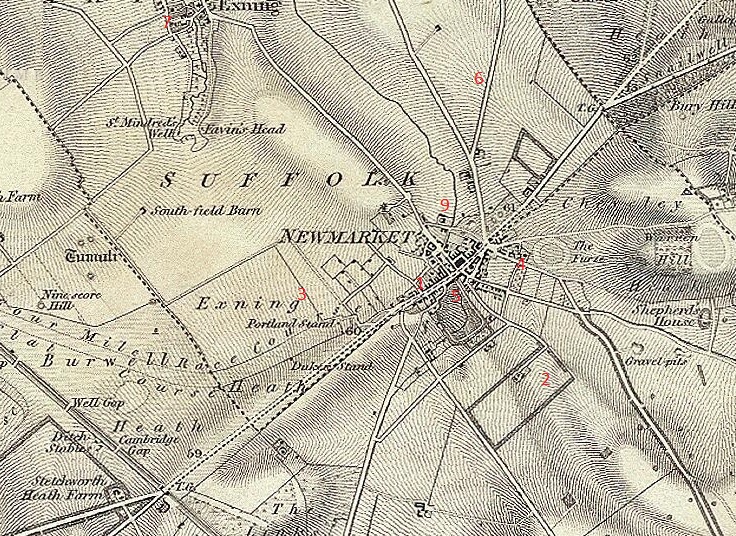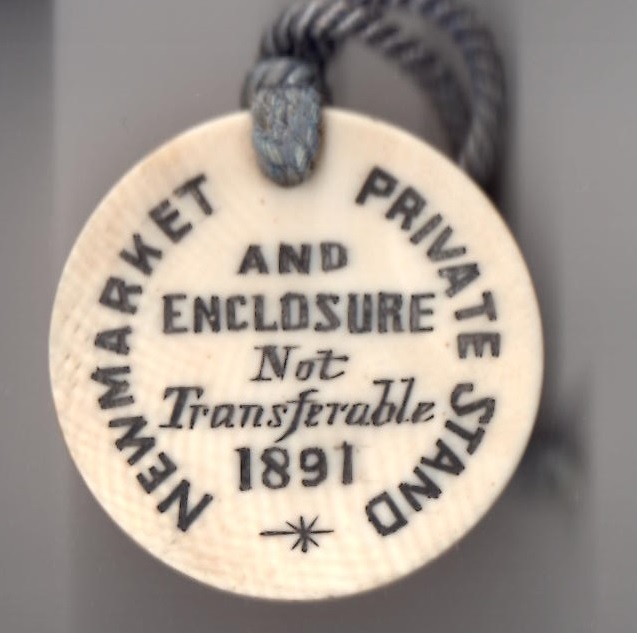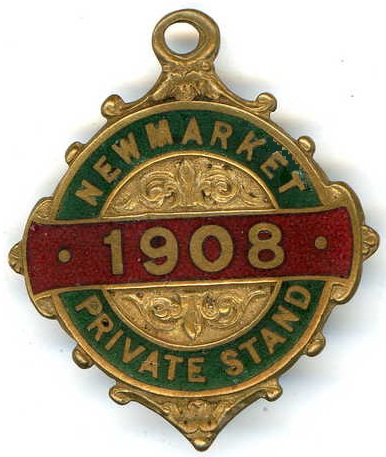1903-1972
Coronation Stables, on Station Approach, close to the Old Station and Tattersalls, was built in 1903 by Greene King Brewery to stable the many horses it required to carry out its business. Horses were needed to pull drays, and to pull carriages for the many customers it entertained at the Old Coronation Hotel which, at one time, was located opposite Coronation House Stables. From 1910 until 1912 there was certainly a stud at Coronation Hotel Stables, standing horses like Red Hall II, Cophetua and Holiday House, winner of the 1908 Seaton Delaval Plate. A balustrade on the main house is thought to have come from Euston Station when it was redeveloped. Once Greene King had no further use for the stable block the buildings were changed into office blocks and the premises were used by the Newmarket Bloodstock Agency. At some stage in the 1970s the property was purchased by Richard Galpin who installed various trainers to take charge of the stables. In the 1980s the property was purchased by William Hastings-Bass, son of the racehorse trainer Peter Hastings-Bass and his wife Priscilla, who was one of the first ladies to become a member of the Jockey Club. Horses for Queen Elizabeth II were trained at Coronation House Stable and Marriott Stables from 1979 until 1989, by William Hastings-Bass.
1972-November 1976 Richard Galpin, Ron Boss
Richard Galpin moved into Coronation Stables in the early 1970s. He had married Felicity Vivien Wright, daughter of Guy and Viola Wright, in Newmarket in 1962. Richard employed Ron Boss to train at Coronation Stables between 1972 and late 1976. Ron Boss was born in Barry, in the Vale of Glamorgan, and after spending 10 years as assistant trainer in Lewes he moved to Newmarket in 1972 to take charge of Coronation Stables. After the tragic death of Atty Corbett in November 1976, La Grange was taken over by Ron Boss where he enjoyed immediate success. In 1977 he saddled Olwyn to win the Irish Oaks by a short head from Sassabunda, whilst still a maiden, when ridden by Kipper Lynch. In 1979 Alan Bond was appointed stable jockey on the back of winning the apprentice championship in both 1974 with 40 winners and 1975 with 66 winners. Ron retired as a trainer in 1997 after spending 25 years in Newmarket.
For over 4 centuries racing has been staged in Newmarket, but how have the racecourses evolved from an initial starting point at Fleam Dyke Pumping Station, some 8 miles from the town, with a winning post barely 200 metres from the town centre, into two world recognized, excellent racecourses and a universal acceptance that Newmarket is the Headquarters of racing?
To access an interactive racecourse map showing over 50 individually named racecourses CLICK HERE. The map will enable you to:-
1. Determine when extended races over 8 miles, 6 miles and 4 miles began to be replaced by the courses now visited by thousands annually;
2. Consider how the challenge of crossing the Devil's Dyke was overcome;
3. Contemplate why the town no longer has a steeplechase course despite having at least 5 courses during the past 2 centuries;
4. Examine the practicalities of having up to 48 starting posts and winning posts;
5. Appreciate that it was not financially viable to have an open racecourse spread widely across the heath, with a finishing post barely 200 metres from the town centre;
6. Research how and why the Cambridgeshire Handicap has been contested over 3 different courses.
NOTE: The map does not make mention of 2 particular courses:-
(i) Sefton Course (also known as the Cambridge Road Course)
Source: 1970 Raceform. Used from 1959 to 1975.
(ii) New Circular Course
The Circular Handicap was run on Friday 29th October 1875 on the New Circular Course of about two miles.
Source: London Standard (30th October 1875): ''the horses started near the Turn of the Lands, ran back way of the Cambridgeshire Course towards the Ditch, and afterwards proceeded down the side of the Tan Gallop, and turned into the Rowley Mile near the Bretby Stakes starting post, finishing at the stand at the end of the flat. Except in the hollow near the Cambridgeshire start the runners should have been visible all the way if the sky had been bright and clear''.
Another report hoped that the Circular Handicap would become a feature in future programmes, as it would be contested in front of the new grandstand which would be completed in about a year and would be able to accommodate thousands.
(I am grateful to Tim Cox for bringing attention to these 2 courses.)
Enjoy researching the intriguing history of Newmarket and its many racecourses.

1978 Ron Sheather
In February 1978 Ron Sheather, a successful flat and jumps jockey, was granted a licence to train at Coronation House Stables. He had previously been assistant and jockey to Toby Balding for 8 years followed by a 3-year stint with Barry Hills at Lambourn. In his first, and only, season at Coronation Stables he had 15 horses in training, the stable star being Hawkins owned by Richard Gilpin. In the 1977 season Hawkins won the Chesterfield Stakes at Newmarket, and the Prix d'Arenberg at Chantilly. Ron moved to take up a new position at Park Lodge stables in 1979. Richard Galpin had already purchased Park Lodge in 1976 and appointed Ron Sheather there as his trainer in 1979. Richard then sold Coronation Stables to Ian Walker.
1979-1983 Ian Walker
When Ron Sheather moved across town to work with Richard Galpin at Park Lodge stables Coronation Stables became available and was purchased by Ian Walker.
1984-1988 William Hastings-Bass
William Edward Robin Hood Hastings-Bass, born on 30th January 1948, was educated at Winchester College and Trinity College, Cambridge, and became the 17th Earl of Huntingdon. After completing his education, he became assistant to Sir Noel Murless at Warren Place before training on his own account from 1977 at Marriott Stables, now known as Chestnut Tree Stables. By the early 1980s he had developed a 70 strong string, but in 1982 he decided to leave these shores and set up a training establishment in Australia with Bart Cummings and Colin Hayes. He remained there for 2 years, but returned in 1984 to train at Coronation Stables until 1988, before moving to Dick Hern's establishment at West Ilsley. He sold Coronation Stables to Neil and Lesley Graham in December 1989.


December 1989-1999 Neil Graham
Neil Graham served as assistant trainer to 4 different trainers before embarking on his own career. He began in 1980 with Derek Kent, remaining with him for one more year before joining William Hastings-Bass between 1981 and 1982 at Marriott Stables. To gain further experience he travelled to Kingsclere to act as assistant to Ian Balding, remaining with him for 5 years. He squeezed in a year with John Gosden between 1987 and 1988, but then moved to Dick Hern's Stables at West Ilsley in 1988 and was encouraged to take out his own licence when Dick Hern became ill during that year. During his brief stay in charge of Dick Hern's stable he trained the 1988 St Leger winner Minster Son (SR 1972) owned by Lady Beaverbrook and ridden by Willie Carson who had bred Minster Son. Whilst Neil was at Dick Hern's he met Sheikh Hamdan Al Maktoum, which was to stand him in good stead when he began training on his own account. In December 1989 he purchased Coronation Stables with his wife Lesley to launch his own training career. He enjoyed an early success with the filly Silken Lines owned by the Earl of Carnarvon. Arguably his greatest success was with Thrilling Day in the 1996 Nell Gwyn Stakes at Newmarket, beating Bint Salsabil and Honest Guest. He enjoyed further success that year with Crumpton Hill in the Bunbury Cup at Headquarters, ridden to victory over Rabican and Mullitover by Michael Roberts. He met up with Sheikh Hamdan Al Maktoum in 1996 when they were both at Tattersalls sales, and he asked the Sheikh to send him some horses, which he duly did. He continued to send Neil horses each year, sending him 7 horses in 1999.
1996 Nell Gwyn Stakes THRILLING DAY 20/1 owned by Bloomsbury Stud, trained by Neil Graham and ridden by David Harrsion
1996 Bunbury Cup CRUMPTON HILL 7/1 owned by T H Chadney, trained by Neil Graham and ridden by Michael Roberts
Coronation Stables is now divided into a number of Flats.



